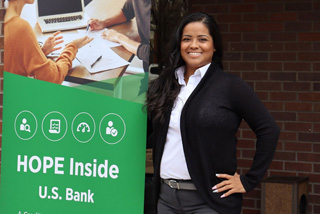
Tips for handling rising costs from an Operation HOPE Financial Wellbeing coach

What to do with your tax refund or bonus

For many kids, allowance is the first lesson in personal money management. Here are some best practices your children can follow for future saving and spending.
Children can actually grasp basic money concepts (e.g. coin names) around age 3. And a simple tool that can help further teach financial education and responsibilities is allowance. According to a survey by the American Institute of Certified Public Accounts (AICPA), 66 percent of parents give their child an allowance of $30 per week.
When and how much?
A general suggestion is to start in kindergarten or first grade, giving $1 for each year of the child’s age. So, for example, a 6-year-old could get $6 per week. This can be an easy way to keep things fair in households with multiple kids. Ultimately, the allowance start date, amount and frequency is up to your family.
Teaching the one-third rule
This popular method splits allowance into equal portions for saving, spending and giving. For kids who love to play and build things, an easy way to learn is with separate piggy banks or jars. Label them save, spend and give, and this simple money management technique will become ingrained.
As the savings jar fills up, take your kids to the bank and open a savings account. This is especially important as they get older. It can give you the chance to talk about bigger money topics, such as interest and long-term goals. Savings accounts are also easier for parents to transfer money should you need to in the future. Plus, your financial institution might even offer candy or other freebies to reinforce this positive, fun experience.
If your children have outgrown piggy banks, apps like FamZoo and Goalsetter can digitize the allowance and management experience, while teaching kids about financial education.
Charitable giving at a young age can help instill the value of helping others. Encourage your kids to find a cause they care about. Some kid-friendly ideas? Donating to a local animal shelter or an environmental organization.
Make saving a habit
Saving money is a long-term skill. Learning it early through allowance can help set the stage for financial success in adulthood. Start off by letting your child set their own goals – but guide them. Teach them how skipping short-term wants can help reach long-term goals.
Also, ask them to write their goals down. Tracking their progress can be an easy visual reminder of how far they’ve come or how far they need to go. And, let them learn from mistakes. If they spend all their allowance, try not to provide more money before the next allowance period. It’s important to experience that when money runs out, it runs out.
Lastly, lead by example and save money yourself. Use your own jar system to show how you implement smart money habits. Reiterate the message that every time you get paid, you save a portion of your check to prepare for the future.
Do your children receive an allowance? Learn how to open a bank account for a minor today.


